The Radcliffes of Dilston Hall
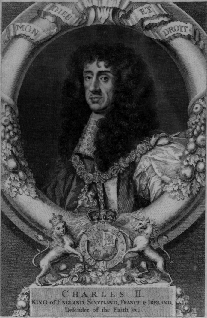 The Radcliffes, a family that originated in Lancashire, succeeded to the manor of Dilston in Northumberland in the early sixteenth century, when Edward Radcliffe of Derwentwater in Cumberland married a Dilston heiress, Anne Cartington.
The Radcliffes, a family that originated in Lancashire, succeeded to the manor of Dilston in Northumberland in the early sixteenth century, when Edward Radcliffe of Derwentwater in Cumberland married a Dilston heiress, Anne Cartington.
Sir Francis Radcliffe, 1st Baronet, was a noted Catholic recusant and arrested on suspicion of complicity in the Gunpowder Plot. His son Edward, 2nd Baronet, was a distinguished Royalist who, during the Civil War, suffered the confiscation of his estates.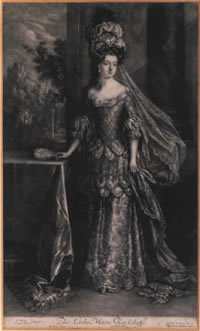 Sir Francis, 3rd Baronet, was the most ambitious of the Radcliffes. He retrieved the family estates, and in 1688 was created Earl of Derwentwater by James ll, following the marriage of his son Edward to Lady Mary Tudor, a natural daughter of Charles ll by the actress, Moll Davis. This prestigious marriage alliance with the ill-fated Stuarts proved to be the downfall of the Radcliffes, who, after the Glorious Revolution, were noted as being the most wealthy and powerful Jacobite family in the North of England.
Sir Francis, 3rd Baronet, was the most ambitious of the Radcliffes. He retrieved the family estates, and in 1688 was created Earl of Derwentwater by James ll, following the marriage of his son Edward to Lady Mary Tudor, a natural daughter of Charles ll by the actress, Moll Davis. This prestigious marriage alliance with the ill-fated Stuarts proved to be the downfall of the Radcliffes, who, after the Glorious Revolution, were noted as being the most wealthy and powerful Jacobite family in the North of England.
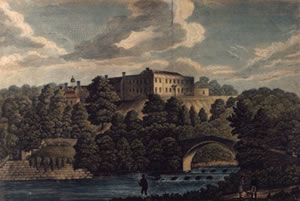 When in 1709, James Radcliffe, the young 3rd Earl of Derwentwater returned from France to take up his family seat, he set about building a grand and stately mansion at Dilston that would rival the other early-eighteenth-century houses in the county. Contemporary engravings show the imposing mansion set high above the Devil's Water, with its formal flower gardens and orchards stretching down to the river.
When in 1709, James Radcliffe, the young 3rd Earl of Derwentwater returned from France to take up his family seat, he set about building a grand and stately mansion at Dilston that would rival the other early-eighteenth-century houses in the county. Contemporary engravings show the imposing mansion set high above the Devil's Water, with its formal flower gardens and orchards stretching down to the river.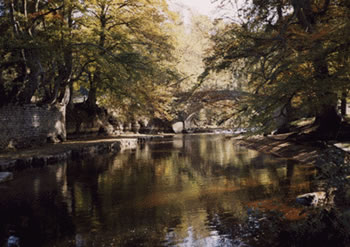 There had been fountains and a forecourt paved in black-veined limestone, with steps leading up into a marble hall. Dilston Hall never reached completion, for, at the outbreak of rebellion, work was suspended, never to be resumed. The impeachment of the Earl in 1716 resulted in the sequestration of the Derwentwater Estates and the demolition of Dilston Hall in 1768
There had been fountains and a forecourt paved in black-veined limestone, with steps leading up into a marble hall. Dilston Hall never reached completion, for, at the outbreak of rebellion, work was suspended, never to be resumed. The impeachment of the Earl in 1716 resulted in the sequestration of the Derwentwater Estates and the demolition of Dilston Hall in 1768 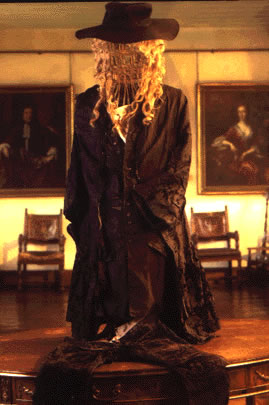 When the Earl's son, John Radcliffe, the titular 4th Earl, died in 1731 at the age of nineteen, the Government conferred the Derwentwater Estates upon Greenwich Hospital. The following year, John's sister, Anna Maria Barbara, married Robert James, 8th Lord Petre, of Ingatestone Hall in Essex. Anthony James Radcliffe, 4th Earl of Newburgh, of Slindon House in Sussex, who died in 1814, was a grandson of Charles Radcliffe, and the last direct male heir of the Radcliffes of Dilston. Most of the existing family portraits and relics were handed down within these two families, and some of these, including the clothes worn by the Earl of Derwentwater at his execution, are now on display at Ingatestone Hall near Chelmsford, which is open to the public.
When the Earl's son, John Radcliffe, the titular 4th Earl, died in 1731 at the age of nineteen, the Government conferred the Derwentwater Estates upon Greenwich Hospital. The following year, John's sister, Anna Maria Barbara, married Robert James, 8th Lord Petre, of Ingatestone Hall in Essex. Anthony James Radcliffe, 4th Earl of Newburgh, of Slindon House in Sussex, who died in 1814, was a grandson of Charles Radcliffe, and the last direct male heir of the Radcliffes of Dilston. Most of the existing family portraits and relics were handed down within these two families, and some of these, including the clothes worn by the Earl of Derwentwater at his execution, are now on display at Ingatestone Hall near Chelmsford, which is open to the public.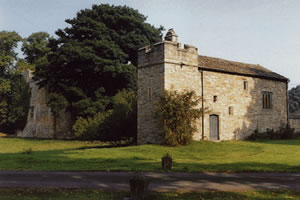 Today, Dilston Castle, a picturesque ruin, is all that remains of the grand family seat of the Radcliffes, Earls of Derwentwater. This ruined, early-fifteenth--century tower house was once incorporated in the western wing of Dilston Hall. Dilston Chapel, which stands nearby, was built c.1616 and is a rare example of a post-Reformation recusant chapel. At the foot of a wooded escarpment beyond the Castle, the Devil's Water, a lively tributary of the River Tyne, flows beneath an elegant, single-span bridge, built at the same time as the chapel.
Today, Dilston Castle, a picturesque ruin, is all that remains of the grand family seat of the Radcliffes, Earls of Derwentwater. This ruined, early-fifteenth--century tower house was once incorporated in the western wing of Dilston Hall. Dilston Chapel, which stands nearby, was built c.1616 and is a rare example of a post-Reformation recusant chapel. At the foot of a wooded escarpment beyond the Castle, the Devil's Water, a lively tributary of the River Tyne, flows beneath an elegant, single-span bridge, built at the same time as the chapel. 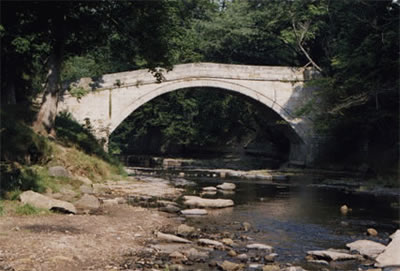 The Lord's Bridge (as it is known) and the chapel are said to have been built with money originally raised for financing the Gunpowder Plot. In days gone by, an ancient deer park was sited on the land beyond the bridge, and the wooded bankside leading up to the castle was landscaped to create the picturesque riverside gardens of Dilston Hall. The site has a history that can be traced back to the twelfth century, when the ancient settlement of Dyvelston was established on the banks of the Devil's Water, and an earlier mediaeval castle stood on the steep escarpment overlooking the river.
The Lord's Bridge (as it is known) and the chapel are said to have been built with money originally raised for financing the Gunpowder Plot. In days gone by, an ancient deer park was sited on the land beyond the bridge, and the wooded bankside leading up to the castle was landscaped to create the picturesque riverside gardens of Dilston Hall. The site has a history that can be traced back to the twelfth century, when the ancient settlement of Dyvelston was established on the banks of the Devil's Water, and an earlier mediaeval castle stood on the steep escarpment overlooking the river.